Learn about the symptoms of a Hereditary angioedema (HAE) attack and understand the importance of minimizing attacks.
HAE Triggers2
Understanding HAE triggers can help you avoid those triggers. It is not possible to avoid all triggers, such as a medical procedure, but your doctor can help you prepare for and manage an attack should one occur.
People with milder disease may know what their triggers are, but those triggers may not always result in an attack. Those with more severe disease will more often experience an attack after a trigger.
Recognizing early signs of an attack can help you treat symptoms quickly and possibly avoid a full-blown attack.
Patient-Reported Triggers
- Physical exertion
- Mental stress
- Mechanical trauma
- Infection
- Weather changes
- Menstruation
- Medical/dental procedures
- Food
- Fatigue/exhaustion
- Pregnancy
- Estrogen-containing oral contraceptive use


